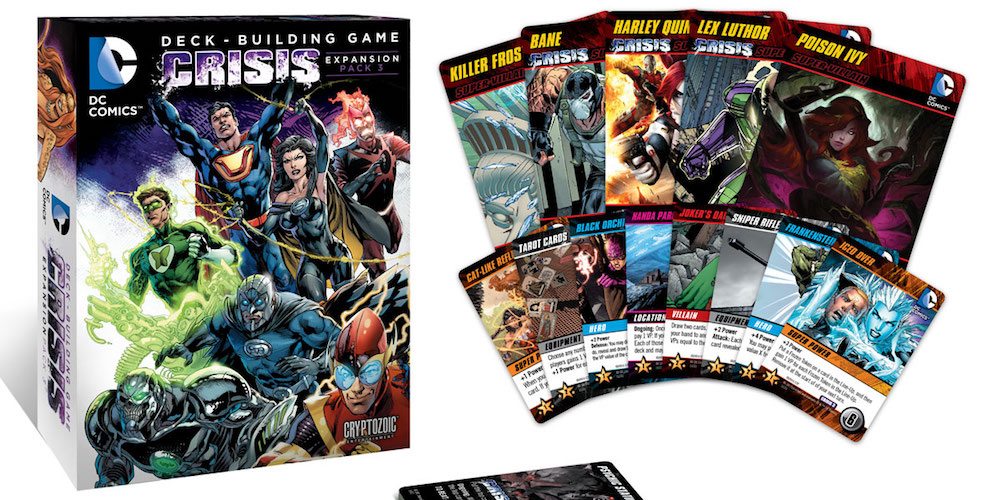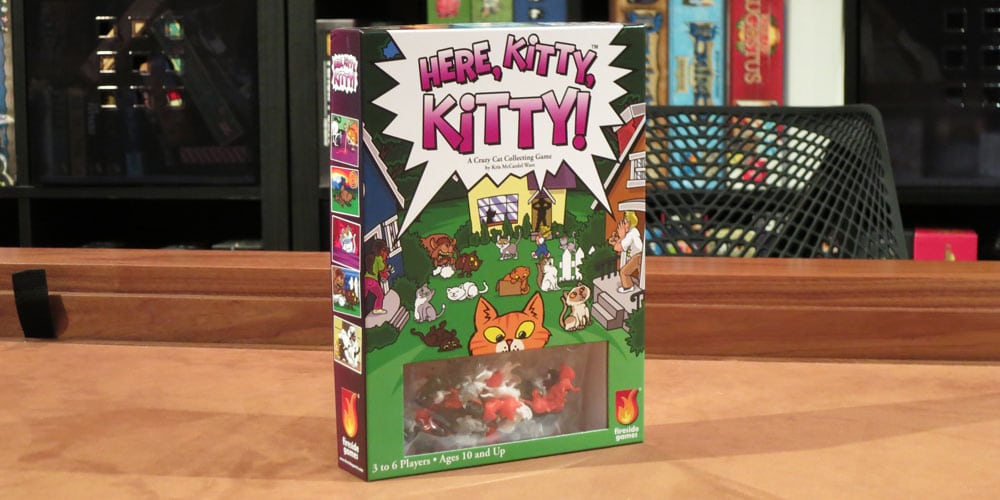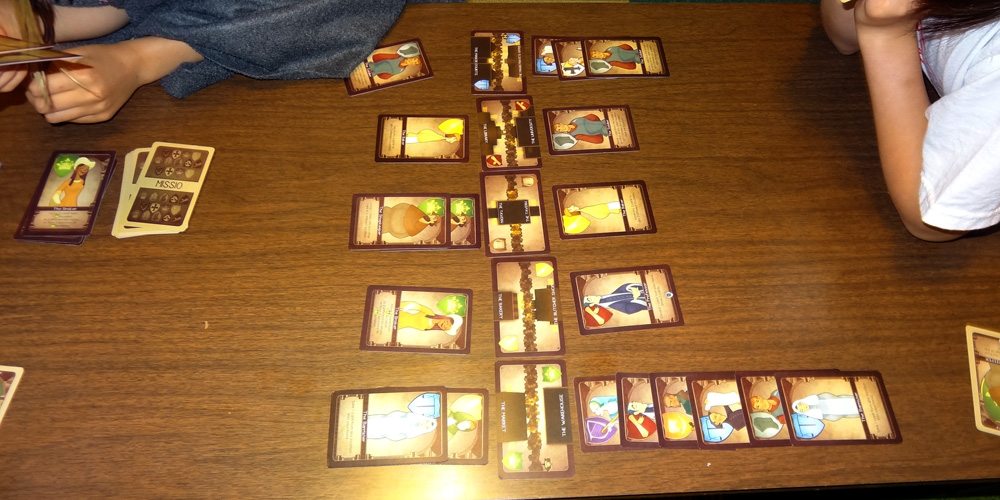
Power to the people! It’s time for regular citizens to overthrow the political elite—but if you’re going to lead the charge, you must first gain the trust of the movers and shakers by accomplishing hidden missions. Fidelitas is a fast-playing card game by Jason Kotarski and Philip duBarry, now on Kickstarter.
New to Kickstarter? Check out our primer on Crowdfunding Basics.
At a glance: Fidelitas is for 2 to 4 players, ages 10 and up, and takes about 20-30 minutes to play. I’ve played it with my kids (ages 7 and 10) so it does work with younger than 10, but some of the longer-term planning may be trickier. The base pledge for a copy of the game is $19—but be sure to double-check shipping costs if you’re outside of the U.S.
Components:
- 5 Location cards
- 20 Missio cards
- 50 Virtus cards
Fidelitas has a pretty simple set of components: 5 Location cards form a very simple “board,” the Missio cards provide your victory point goals, and the Virtus cards are the various townsfolk whose abilities you can use.
The artwork is by Jacqui Davis, who has also provided art for a number of other games (Belle of the Ball, Viticulture, Epic Resort, among others), and it’s fantastic. Her characters look like they belong in an animated movie, and it helps to set the stage for the game. The cards are generally pretty easy to understand without referring to the rules, though there are more detailed explanations of everything in the rules. (Since this is a prototype, some of this is still in development and may change somewhat before final production.)
How to play
The goal of the game is to be first to reach a set number of points: 10 points in a 2-player game, 8 points in a 3-player game, and 6 points in a 2-player game.
To set up, you lay out the five locations in order to make up the City: Judiciary, Academic, Tavern, Artisan, and Commerce. Each card except the Tavern has two different locations on it, one on each side. In addition, the Judiciary has a little sign indicating the Castle, and the Commerce has a sign indicating the Harbor—these are two spots that may be referred to by other cards.

Shuffle the Virtus cards and Missio cards separately, and deal two of each to each player. Then place one Virtus card in each of the 10 locations (one on each side of the location cards). The remaining cards are set nearby as draw decks.
On each turn, you play a Virtus card, then score Missio cards if possible, and then draw a replacement Virtus card (except in special cases).
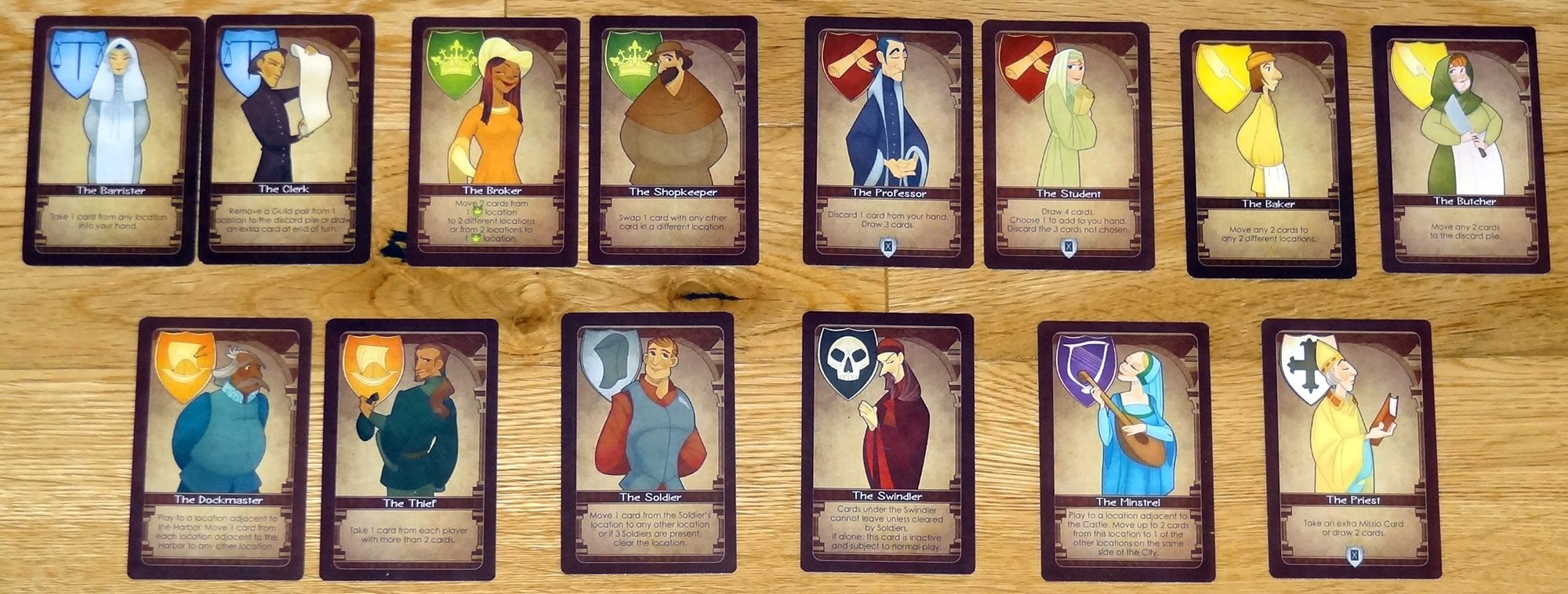
The Virtus cards are all people, and they each belong to a specific Guild, represented by the shield in the corner. Virtus Cards that match one of the location guilds (Judiciary, Academic, Artisan, and Commerce) generally must be played next to those location cards; others may specify their location or may be played anywhere. Once you play a Virtus card, you must then resolve the action of that card. For instance, the Butcher lets you discard any two Virtus cards from the City; the Student lets you draw four cards and select one. Soldiers have a special action: they remove one other Virtus card from their location to a different location; but if there are three Soldiers in the same location, then that location is cleared and all Virtus cards there are discarded.
You may also play any Virtus card to the Tavern (on either side). If you do so, you draw the top Virtus card and play it on the opposite side of the Tavern. Then, you may return one of your Missio cards to the bottom of the deck and draw a new Missio card.
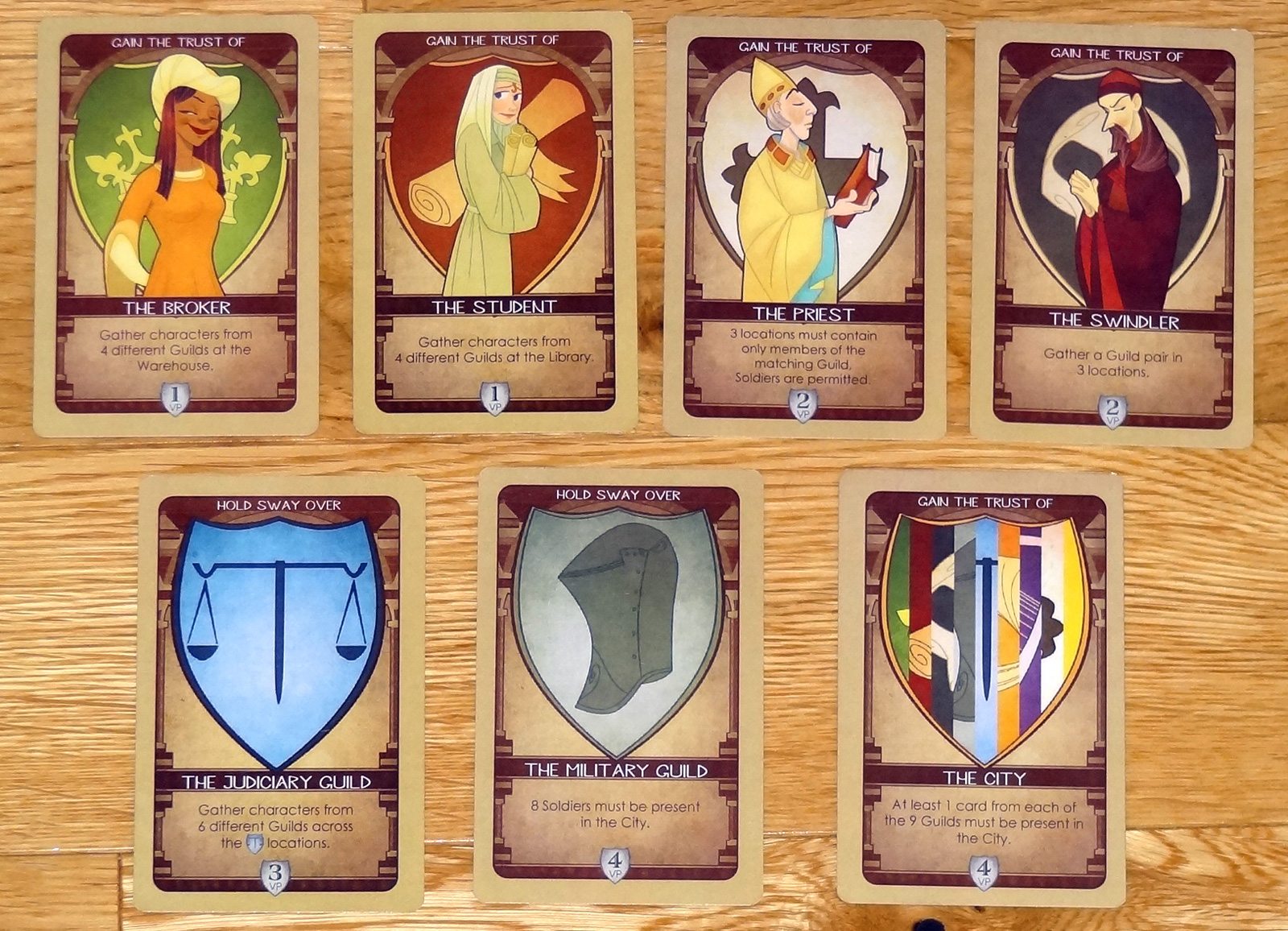
Once you’ve played and resolved your Virtus card, you may then score any number of Missio cards. These are hidden objectives, and are worth varying numbers of points. There are a couple of types of Missio cards. Some say “Gain the trust of” a specific person—in those cases, you need to gather characters from four different guilds at a particular location. Some say “Hold sway over” a guild—these usually require you to get characters from six different guilds at that guild’s two locations combined. There’s even one to “Gain the trust of the City” which requires all nine guilds to be present; it’s worth four points, which is pretty significant, but is often out of your control.
If you meet the requirements of a Missio card, you play it face-up, gaining the points indicated on the card, and draw a replacement Missio card.
Finally, to end your turn, you draw one Virtus card. The exception here is that some actions (usually those that give you more cards) cause you to skip drawing a card at the end of your turn.
Play continues until somebody reaches the point goal. Or, if the Virtus deck runs out twice, then the game ends immediately and the player with the highest score wins.
The Verdict
Fidelitas has a pretty good pedigree. Jason Kotarski is the designer of Great Heartland Hauling Company, a nice compact pick-up-and-deliver game. Philip duBarry has designed a couple games in AEG’s Tempest line, as well as Revolution! and a few others. And with the art by Jacqui Davis and graphic design by Darrell Louder, it looks really sharp, even in prototype form. What really matters, of course, it how it plays—and I’m happy to report that Fidelitas is fun, with a good mix of luck and strategy.
Since many of the characters can only be played at specific locations, getting combinations of different guilds means using abilities to move them around after they’ve been played. The characters are all useful in different ways—some are great for getting people into the right spots, and others are good at disrupting somebody else’s plans. For instance, if you see an opponent moving a lot of different guilds to the Library, you could use the Butcher to move any two cards to the discard, potentially setting that player back.
So far in my games it’s been pretty easy to tell at least roughly what somebody is going for, because they’re moving cards to a specific location. But you can’t necessarily tell if somebody is trying to gain the trust of the Butcher or Baker, or just hold sway over the Artisan Guild as a whole. But then since there are other missions, like the “8 Soldiers Present in the City,” it could be that somebody is just moving things around to fool you. Because of the way some Guild and Character missions can overlap, it could also be the case that fulfilling your objective helps somebody else get closer to theirs as well, which can make for interesting dynamics.
As you’d expect from a card game, there is luck involved—if you really need to move characters around but you keep drawing characters that don’t have a move ability, you may feel frustrated. On the other hand, the characters that don’t move people usually let you draw more cards or discard existing characters from the City, which gives you a chance to disrupt somebody’s plans. Also, you can always swap out a Missio card by going to the Tavern, which might give you a more reachable goal.
The game is pretty quick—aside from the point goal, the Virtus deck only gets re-shuffled once, and then if it runs out again, the game is over. That means players have a little bit of control over how quickly the game ends. Playing characters at the Tavern uses up cards more quickly, since you always add another card from the deck to the other side of the Tavern. But drawing cards from the Tavern, or using cards that draw fewer cards, may prolong the game. It also matters how many cards get discarded—because if you run out the deck and very few characters have been discarded, that second time through the deck won’t last long.
Overall, I’ve enjoyed Fidelitas and I hope the Kickstarter campaign is successful. To find out more about the game and make your pledge, visit the Kickstarter page.
Disclosure: GeekDad received a demo prototype of this game.

